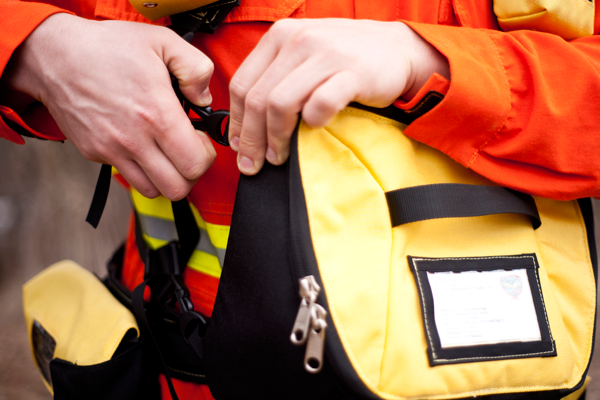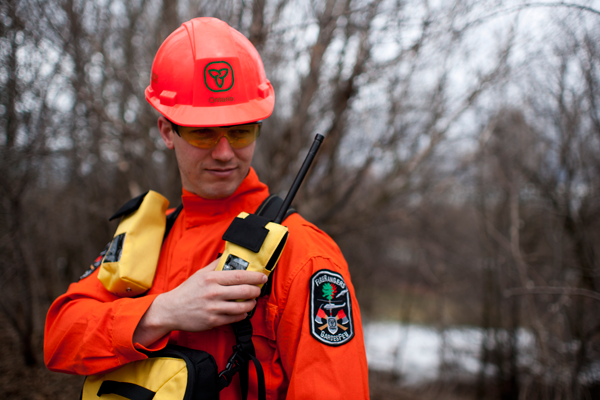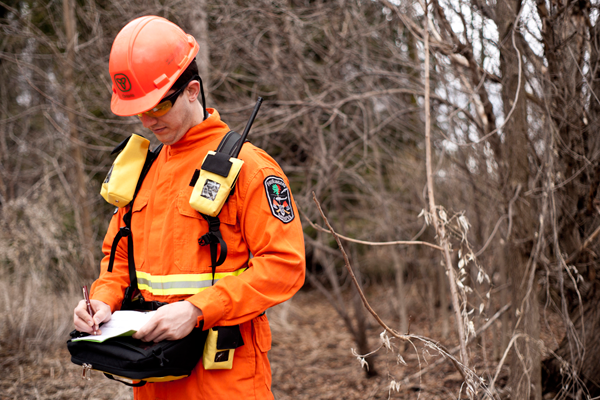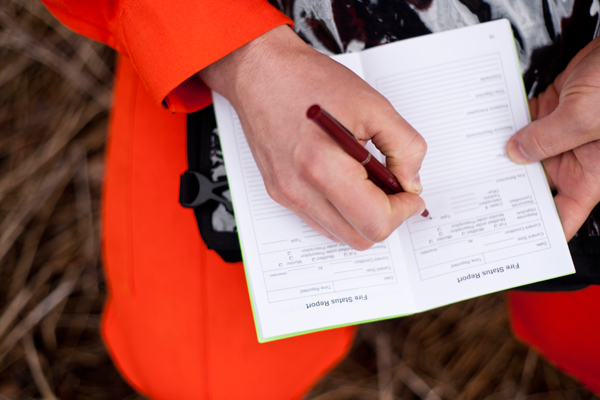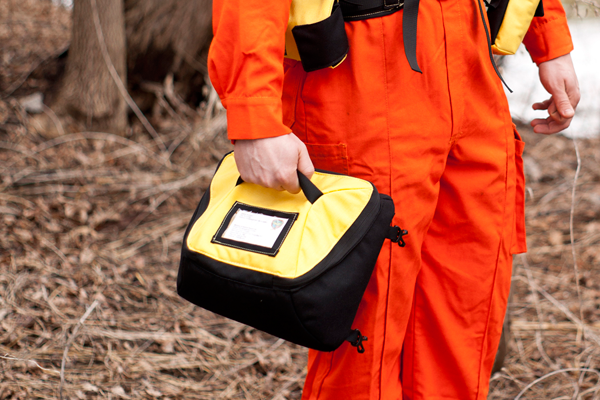Ember
(September 2010 – April 2011)
Industrial Designer
mnr.gov.on.ca/en/
Ember Communication System is the result of an intensive eight-month collaboration with the Ontario Ministry of Natural Resources, Aviation and Forest Fire Management Division, during my senior year at Carleton. The project began with general research into the forest firefighting industry, the requirements of a firefighter, their equipment and gear and then narrows down into a specific task cycle in the field. The target user selected for this project was the Initial Attack Incident Commander (IAIC). Concept development and improvement of the existing IAIC kit took place based on design opportunities that were revealed during observations and user feedback. A potential concept was then selected for further development, user-testing and prototyping. The result is Ember, a two-piece wearable system that is capable of enhancing documentation, communication and overall workflow. The final prototype was hand-sewn by me.
This project was unique as I was designing for a very small group of users. In total, there are about 50-60 IAIC’s in Ontario, each year. The task is rigorous and the interview process to get there is not easy. Fortunately, I was able to work closely with Lyle, an IAIC with 6 years of experience. I observed him closely as he re-enacted out his steps when a forest fire is reported. Through analysis, I discovered that his mobile work place was cluttered. In fact, he had no ‘workspace’ at all. The main form of transportation to most fires was by a helicopter, which is unstable, causing items in his lap or in his bag to fall out.
In addition to observations, conversation and task analysis, I also conducted background research on all of the environments, workspaces and individuals that the IAIC interacts with. This research was carried out by myself and a team of 5 others. They also had to find an opportunity that they could improve.
Noting the issues, I went to search the market for products that could resolve the issues. I compared the sizes, material, weight and portability of these objects. This comparative analysis was useful as I was about to relate it to jobs of similar nature. For example, outdoor surveyors, outdoor enthusiasts and search and rescue crews.
Taking into consideration ergonomics and various body sizes, I had to create prototypes to test out sizing and adjustability. In total, I was able to conduct usability tests on three IAICs and five classmates. Following the usability test, I gave them a survey and asked them some verbal questions such as “How enabling or disabling did you find the various prototypes?”.
The final prototype was created with fire-retardent materials that were defined in the final report. I was able to contact a professional that specializes in outdoor equipment and gear and using his workshop, I hand-sewed the prototype.
Award: Dean’s Award for Innovation in Collaboration
